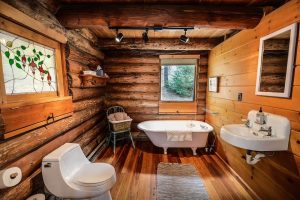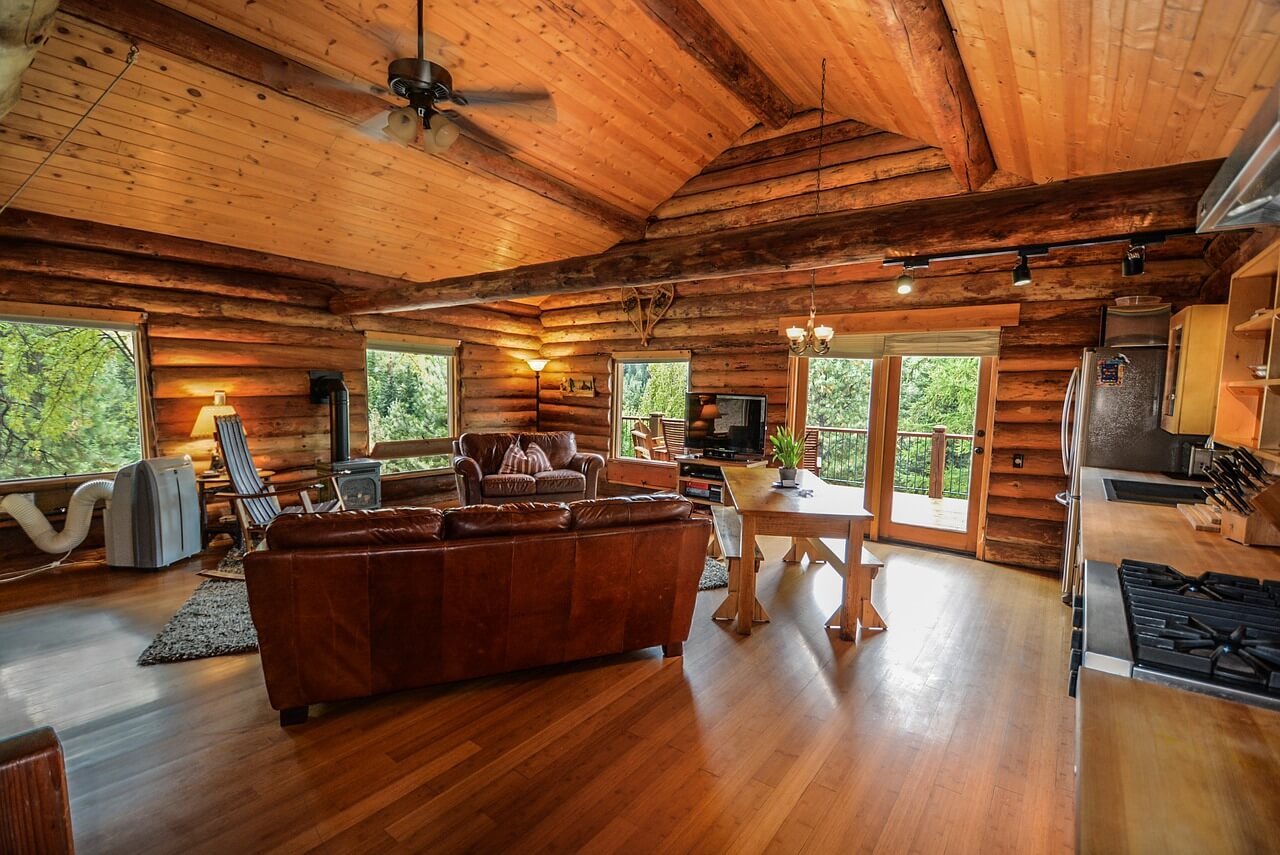Many buyers have fond memories or cozy fantasies of living in a Virginia log home but are worried that log homes are less energy-efficient than conventional homes. With rising energy costs and concerns about climate change, buyers want their home to be as energy-efficient as possible. Fortunately, log homes actually provide several advantages for energy efficiency, and problem areas can be updated to boost efficiency – all without diminishing the beauty of the log walls.
How Do Log Homes Really Measure Up in Energy Efficiency?
In some ways, log homes are at the height of efficiency and sustainability. For one, the building material is unbeatable: trees are a fantastic renewable natural resource, and building with whole logs means that it isn’t necessary to use extra energy to manufacture boards, drywall, and insulation. Logs are also great insulators because air pockets inside the wood hold cold or hot air, helping to maintain interior temperatures in the same way that manufactured insulation does.
While building with whole logs offers a lot of potential for energy efficiency, the benefits of logs can be undermined by poor construction or materials. Log homes are the most energy-efficient when they have Low-E windows, a roof with good insulation, and tight connections between the beams. Fortunately, most of these potential problem areas can be updated in existing log homes to maximize their energy efficiency.
Optimizing the Efficiency of Existing Log Homes
 If you own or are considering purchasing a log home, there are ways to improve its efficiency and save on energy costs. Before you can really increase the energy efficiency of your log home, though, you need to know where your log home is losing heat. The best way to do this is by getting an energy audit of your home. A thermography energy scan or a blower door test can show you areas of your home that need to be sealed. Thermography energy scans show where your home’s heat loss is happening in a heat map image so that you can easily find and seal the problem areas. Similarly, blower door tests help to test your log home’s air-tightness by identifying parts of your home where outside air seeps in.
If you own or are considering purchasing a log home, there are ways to improve its efficiency and save on energy costs. Before you can really increase the energy efficiency of your log home, though, you need to know where your log home is losing heat. The best way to do this is by getting an energy audit of your home. A thermography energy scan or a blower door test can show you areas of your home that need to be sealed. Thermography energy scans show where your home’s heat loss is happening in a heat map image so that you can easily find and seal the problem areas. Similarly, blower door tests help to test your log home’s air-tightness by identifying parts of your home where outside air seeps in.
The next step to making your log home more energy efficient is sealing all identified leaks. Be careful to check around windows and doors as these are the primary spots where air seeps in from outside. Old windows and doors hurt a log house’s energy efficiency, so consider upgrading to new, Low-E windows and hollow steel doors. If you have a forced-air HVAC system, you should seal your ducts to prevent air from leaking. Finally, you may need to upgrade your roof or add additional insulation.
Tips Designing a New and Efficient Log Home
- Log homes are susceptible to air leaks, but you can minimize this by having the logs dried in a protected space over the course of at least six months before you begin construction.
- To minimize air leakage, build with cedar, pine, or spruce logs.
- Logs have a lot of moisture inside which can lead to wood rot or insect problems. Use waterproofed, insecticide-treated logs to minimize the problem.
- Use a blower door test just after constructing the exterior of the house. This will allow you to check and fix your log home’s air-tightness without wiring or plumbing getting in the way.
- Use the whole-house systems approach in order to optimize your log home’s energy efficiency.
